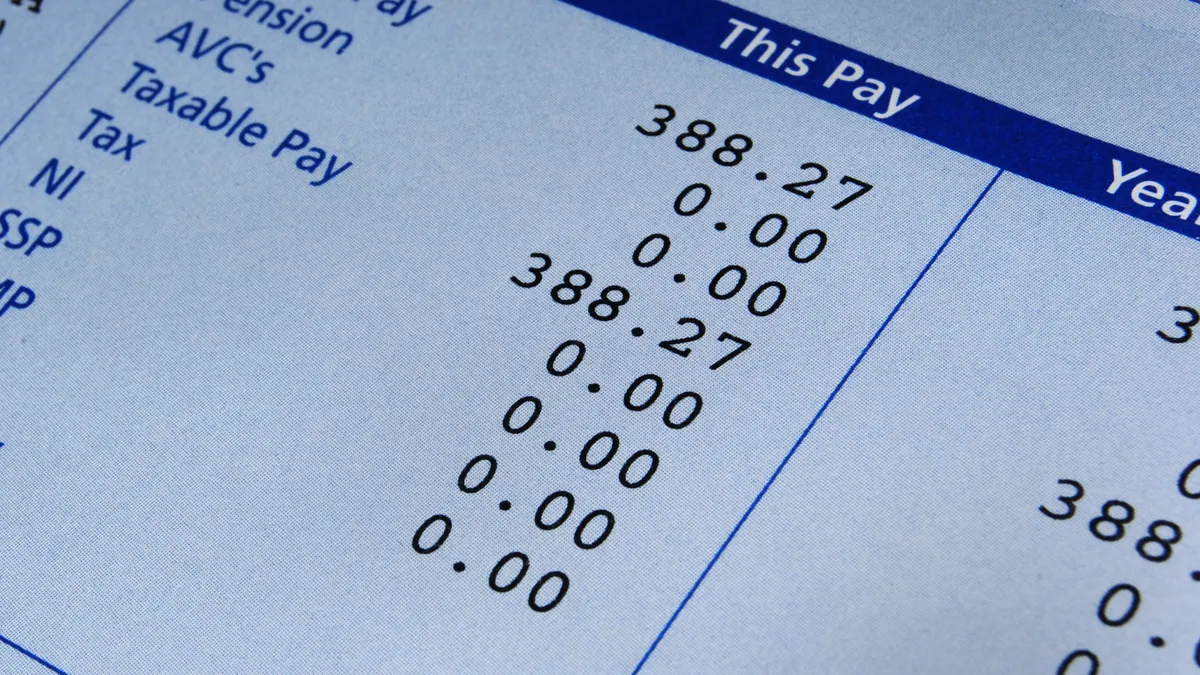It's not every day that the words "compensation" and "benefits" inspire giddiness in employees. But wellness stipends — particularly those eligible for glorious, sometimes indulgent, but still necessary instruments of self-care — often elicit that reaction.
Take professional services firm EY's Well-being Fund, for example. The company pays 75% of the cost — up to $1,000 — of home office equipment, fitness classes, workout equipment and meal delivery services. Electric bikes and converter kits, blenders, juicers, air fryers, massages, tents and camping equipment are also eligible.
Frank Giampietro, EY's newly appointed chief well-being officer for the Americas, said employees were excited at the mere thought of how to spend the money. "You know, just that anticipation of Christmas, a winter holiday or a birthday," he said. Giampietro told HR Dive that EY has actively championed employee well-being for almost a decade.
In the past, his team considered what protocols were in place, whether EY employee needs were being met and what gaps needed to be filled.
EY's people team started reimbursing employees in 2015, courtesy of what was once called "Quality of Life Fund." In 2018, the perk came from the "Fitness Fund." In 2020, EY doubled the money from $500 to $1,000 and renamed the resource the "Well-being Fund." An evolving nomenclature is indicative of the company's ethos to address employee well-being with agility and wonder. Giampietro said the stipend was always intended to hold space for what was "meaningful" and to reject the "one-size-fits-all" approach to mental health."People saw it as a way we're continuing to invest in them and that we really care about their well-being," he said.
A prime example: as of 2022, EY employees can spend their stipend on mattresses. Airfare, rental cars, hotels and other lodging are now also eligible. "We added in vacations because, as we come out of the pandemic and people want to start to travel again, we know the impact that can have for people from a mental and emotional health perspective," Giampetro said.
EY has also expanded the fund to include a form of self-care that its chief well-being officer acknowledges as "controversial." Gaming consoles and chairs, headsets and ear buds, controllers, monitors and webcams are all eligible for reimbursement by EY. Ditto the video games themselves.
"Our folks work hard like everybody else does. If they want to check out at the end of a long day, one way they like to do that is getting on a game [and] going away to a different place for a little while," he said. "Get their brain off of work, and then come back and maybe be more productive. So we decided to add that into the fund as well this year."
An EY spokesperson added that for the past two years, the company has incrementally invested $2 billion in total rewards. Along with increasing compensation, this has looked like upping free counseling and mental health coaching sessions from five per year to 25 per year — available to EY employees and each family member in their household. The people team also expanded backup care from 12 to 24 days, and have increased access to tutoring, child care and adult care resources.
The benefits of the Well-being Fund go beyond the mental health of EY employees — literally and figuratively. The stipend touches EY employees and provides community care. Giampietro recounted how EY employees were able to use the stipend not just for themselves, but also their spouses and children.
Figuratively speaking, this stipend isn't just a fun add-on to a robust mental health package. The opportunity to buy a Nintendo Switch, unwind with a massage or blend up a collagen smoothie could be a secret weapon amid the Great Resignation. For HR teams, wellness stipends can be another tool in their arsenal against attrition.
"Everybody wants to be proud of their workplace," Giampietro said. "It's like, 'Hey, look at how they're taking care of us.' It was very personal for folks. They felt like we were hearing them, listening to them, providing meaningful benefits [for] them."
As for the future of the Well-being Fund, the possibilities are abundant.
"I think as long as we keep in the spirit of what's going to make people feel better — and how [they're] improved from either a mental, emotional, physical or financial health perspective — that's kind of what we're getting at," Giampietro said. "That gives us a pretty wide open lane to figure out what comes next."






















